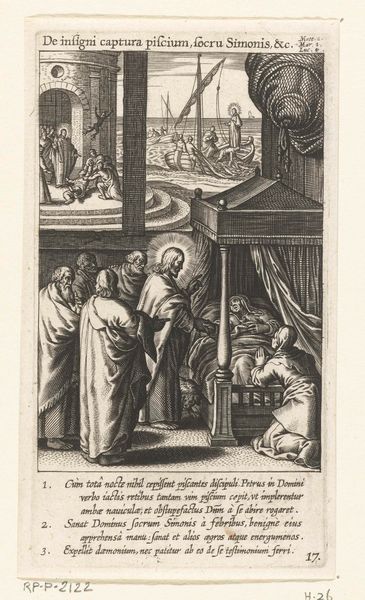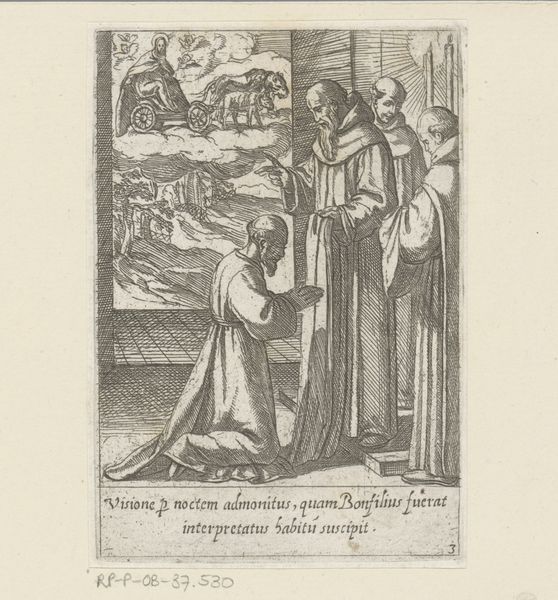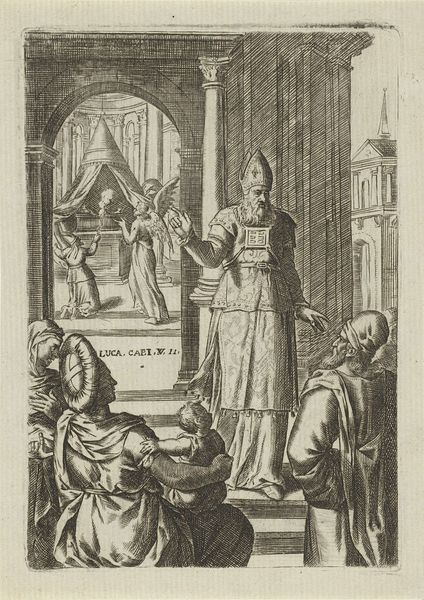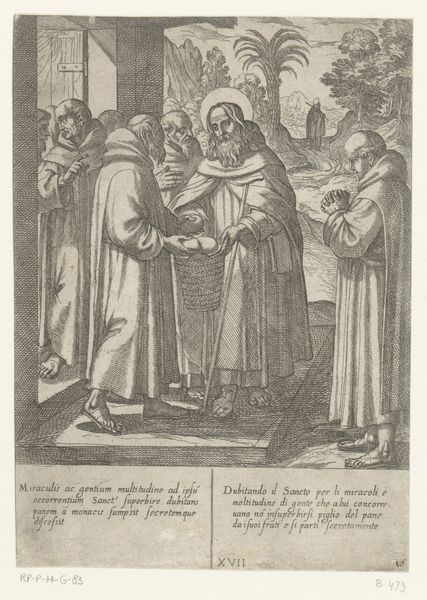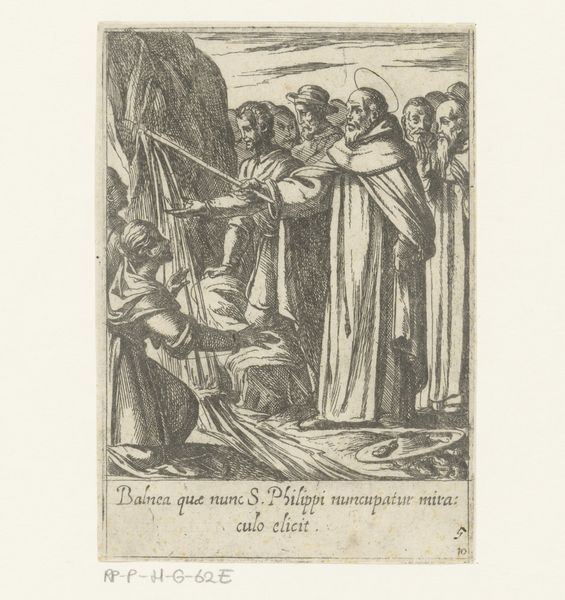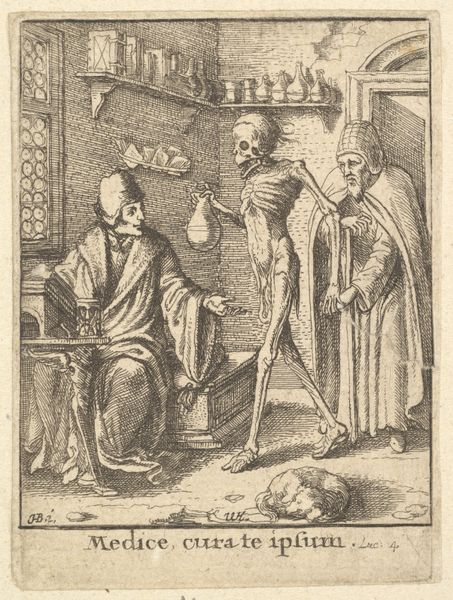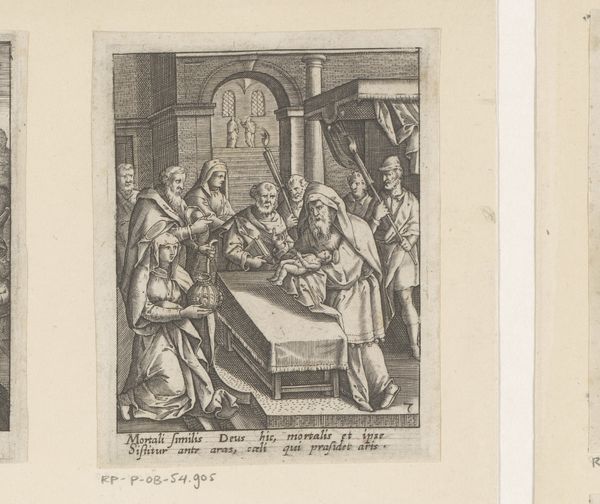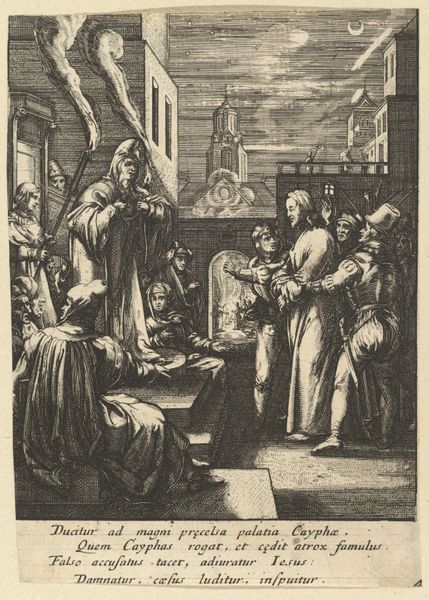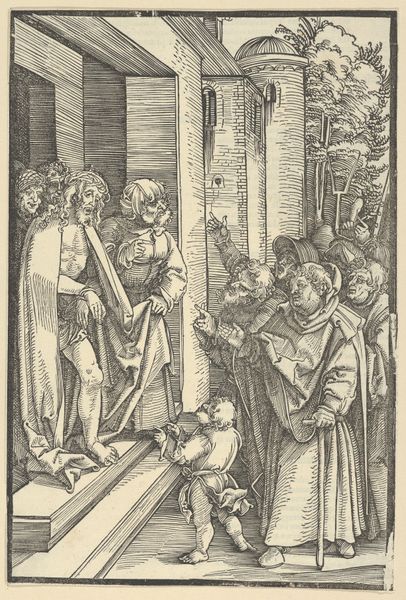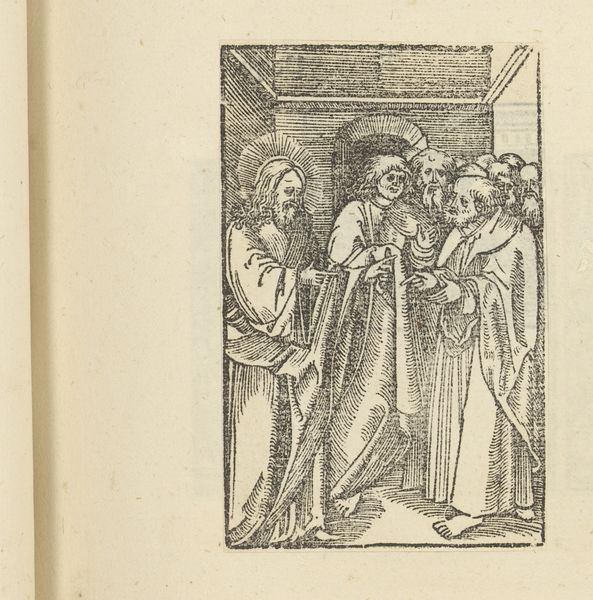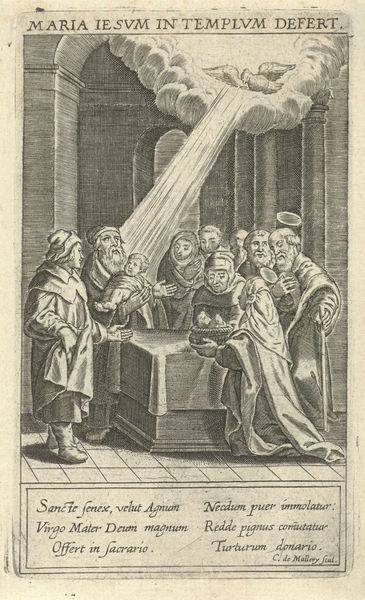
De heilige Philippus gaat voor in gebed als hoofd van de servieten 1591
0:00
0:00
print, engraving
#
baroque
# print
#
old engraving style
#
traditional media
#
figuration
#
line
#
pen work
#
history-painting
#
engraving
Dimensions: height 115 mm, width 80 mm
Copyright: Rijks Museum: Open Domain
Editor: Here we have "De heilige Philippus gaat voor in gebed als hoofd van de servieten," or "The Blessed Philippus Benitius Leads the Prayers as Prior General of the Servites," a 1591 engraving by Antonio Tempesta, housed in the Rijksmuseum. The scene feels quite rigid, almost staged. What do you see in this piece beyond its initial religious context? Curator: It’s tempting to see this image solely through a devotional lens, but let's consider the socio-political role religious orders like the Servites played in the late 16th century. They weren't just spiritual havens. Their confraternities served as crucial social networks and sites of power. Consider, who was included and excluded from these organizations, and what access did it offer? Editor: That's interesting. So, you’re suggesting we look at who these figures in prayer represent in terms of access and influence? Curator: Exactly. The engraving becomes less about piety and more about the visual construction of a specific social hierarchy. Notice how Saint Philip stands above the others, positioned between the praying masses and the Madonna. How might this arrangement of bodies reinforce a power dynamic? Editor: It’s like he’s an intermediary, visually mediating access to the divine. The framing of the Madonna behind him further emphasizes that point. Curator: Precisely. This image also reinforces specific gendered roles, considering the limited space and presence of women. Could this reveal something about how gender intersected with religious life and social status? Editor: I see what you mean. By shifting our focus, it goes from a simple religious image to one layered with questions about societal structures and access. Curator: Right. Art is always a product of, and a participant in, the cultural forces of its time. What you see at face value often conceals deeper dialogues about identity, power, and representation. Editor: That gives me a whole new appreciation for approaching historical artworks, it's more than just the narrative presented. Thanks for that insight.
Comments
No comments
Be the first to comment and join the conversation on the ultimate creative platform.

